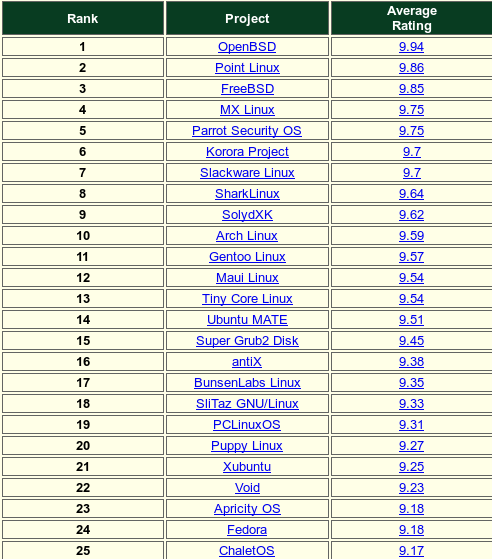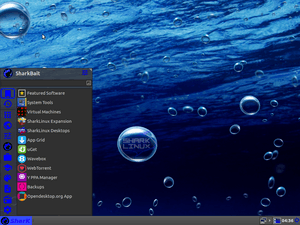SharkLinux
 | |
|
Screenshot of SharkLinux Default DE | |
| Developer | Marcus Petit |
|---|---|
| OS family | Unix-like |
| Source model | Open source |
| Initial release | Weekly Releases. First version debut Jan/17 |
| Latest release | Rolling ISO snapshot / July 21, 2017 |
| Available in | English |
| Update method | Automatic |
| Package manager | APT, Nix and Brew. |
| Platforms | AMD64 |
| Kernel type | Monolithic (Linux) |
| Userland | GNU |
| Default user interface | MATE DE and Deepin DE |
| License |
Free software licenses (mainly GPL), and other licenses |
SharkLinux is a Linux based operating system specializing in virtual environments. The distribution features MATE Desktop for its graphical interface and has the unique capability of running on a cloud server without impact on performance.
To ensure 100% cloud compatibility SharkLinux is developed only on a cloud server using remote desktop to access the interface. The distribution publishes an updated ISO image on a weekly basis and is under heavy development.
Reportedly the distro has been created using only an Android smartphone.
History
In January 2017, SharkLinux made it's de-facto debut when the project was added to the waitlist on Distrowatch. The intention behind submitting the project to DistroWatch was to mark the beginning of development with an anticipated public release in January 2018, reflecting the usual 12 month maturing period required by DistroWatch for a permanent listing. SharkLinux founder, Marcus Petit has since admitted the initial release was created "in between periods of a hockey game" and was not anticipated to receive any attention. Within a week reviews began to appear online.[1] After 5 months and 11 days - more than 6 months earlier than expected - SharkLinux was added to the DistroWatch database.[2]
Features
SharkLinux has several distinguishable features different from most Linux distributions such as; using source-built installers instead of pre-installed software, a single release that is continuously updated, using swap files instead of partitions and the password for sudo (admin) accounts is disabled for convenience. System changes and updates are pushed to the system by way of private cloud and occur automatically without the need for user action.[3][4][5]
Popularity
While placed on waiting list status on DistroWatch.com, SharkLinux rose to first place in user votes in a matter of months inevitably leading to its early induction to the database. On the last day of wait-list status SharkLinux had accumulated 608 votes which represented a 205 vote lead on the 2nd place runner-up. [2]
Since being added to the database SharkLinux page hit activity has consistently fallen into the top 50 distributions. As of July 25, 2017 DistroWatch reported an average user rating of 9.64/10 and placed SharkLinux 8th overall in global rankings.[6][7]

External links
| Wikimedia Commons has media related to SharkLinux. |
References
- ↑ Germain, Jack. "SharkLinux OS is Destined for Success". LinuxInsider. Retrieved 17 July 2017.
- 1 2 Petit, Marcus. "You'll never succeed if you don’t try.". Marcus Petit FaceBook. Retrieved 21 May 2017.
- ↑ DistroWatch. "DistroWatch.com: SharkLinux". distrowatch.com.
- ↑ "SharkLinux - Ubuntu Wiki". wiki.ubuntu.com.
- ↑ "SharkLinux OS Is Destined for Success - Software - LinuxInsider". www.linuxinsider.com.
- ↑ DistroWatch. "DistroWatch.com: Put the fun back into computing. Use Linux, BSD.". distrowatch.com.
- ↑ DistroWatch. "DistroWatch.com: Put the fun back into computing. Use Linux, BSD.". distrowatch.com.
